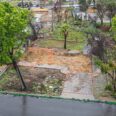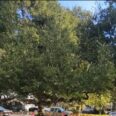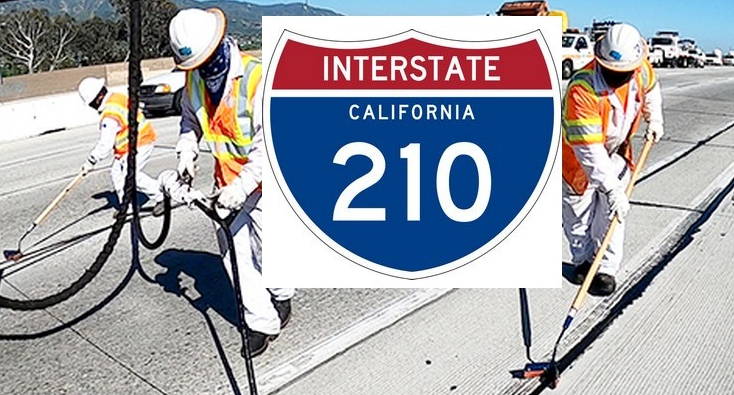
Even as Santa Ana winds continued to blast parts of the Southland, helping to fuel new brush fires in the Castaic area and Sepulveda Basin, local authorities are turning their attention Thursday to the probability of rain hitting the area this weekend, potentially triggering mud or debris flows in recent burn areas.
In the wake of the recent devastating fires, local authorities on Wednesday urged residents to be prepared for weekend rain that could send debris coursing into streets or down mountain slopes.
According to the National Weather Service, a “significant change in the weather” is anticipated by the weekend, with temperatures likely struggling to get out of the 50s, along with a “high to likely chance of rain,” including a chance of thunderstorms in the L.A. area, most likely between Saturday and Monday evening.
The rainfall is expected to start Saturday with an 80% chance of light precipitation of less than a tenth of inch. Saturday evening rain continues and a thunderstorm is possible, according to the NWS.
Forecasters say a pattern of rain showers and possible thunderstorms will continue day and night until Tuesday.
The exact amount of rain expected to fall remained uncertain, with forecasters saying the area could receive anywhere from a quarter- to half-inch, but “local amounts up to 1 inch are possible across south-facing slopes of the San Gabriel Mountains.”
Mark Pestrella, director of the Los Angeles County Department of Public Works, said crews are preparing for the potential rain, deploying K- rails, sandbags and other devices “to manage sediment and debris.”
In the Eaton Fire area, crews were using Santa Anita racetrack as a staging area for supplies.
“Currently, our crews are clearing debris from streets, cleaning and preparing debris basins, deploying sandbags and other systems to keep runoff with ash and other burn debris from entering the storm drain system,” he said. “Public Works is also working with the state to coordinate the deployment of K-rail in burn areas.”
He said residents in the recent burn areas will see a flurry of activity by crews from the county, the California National Guard and the state Department of Water Resources, along with city crews.
Pestrella urged burn-area residents who have returned to their homes to plan to stay indoors during the storm event, saying that while officials do not expect the rain to cause damaging flows that would mandate evacuations, sediment and debris will still likely flow into streets.
“This is not expected to be a tremendous amount of debris, but enough to actually cause transportation problems for our first responders that may be trying to travel,” he said. “I’d like to reserve those streets for our first responders.”
He said people who live in homes that back up to recently burned hillside areas can have county crews come to their homes and inspect their properties to see if any mitigation efforts are needed to protect against possible landslides.
But he warned: “If … there is a slope behind your home that is burned and it’s maybe 20 feet or more in height, and it is adjacent to the property in any direction, your best bet is not to be in that home when it rains.”
The county Department of Public Works is the lead agency coordinating fire-debris-removal efforts following the Palisades and Eaton blazes, in conjunction with the U.S. Environmental Protection Agency — which is handling the first-phase removal of hazardous wastes — and the Army Corps of Engineers, which will oversee physical debris removal. Officials with those agencies noted that preliminary work on removal has begun, but mainly with assessments and establishing temporary storage areas for debris being removed.
Gov. Gavin Newsom said Tuesday that state has dispatched “highly trained teams and specialized equipment” to the Southland to ensure protection from possible rain-sparked debris flows.
To the south, crews were also continuing efforts to extend containment lines about both the Eaton and Palisades fires. As of Wednesday evening, the 14,021-acre Eaton Fire was 95% contained, and the 23,448-acre Palisades Fire 70%, according to Cal Fire.
The fires have thus far claimed 28 lives 11 in the Palisades Fire area and 17 in the Eaton area, according to the county medical examiner.
Los Angeles County Sheriff Robert Luna said Wednesday morning his agency still had 22 active missing-person reports involving adults in the fire areas — 17 in the Eaton area and five in the Palisades area.
Also Wednesday, the county launched a website called The LA County Relief: Funding & Resource Portal, a one-stop site to connect the public with local recovery and support resources.
The site can be found at lacounty.gov/relief, and lists a variety of local community funds for donors to choose from, including supporting first responders, offering housing assistance, providing relief for small businesses and workers, and removing barriers for students and communities.
A FEMA Disaster Recovery Centers is open at Pasadena City College Community Education Center, 3035 E. Foothill Blvd., to assist homeowners with applying for aid.
President Donald Trump is expected to visit California on Friday to view the devastating wildfires in Los Angeles County, but no official details have been released.
The causes of the Eaton and Palisades fires remain under investigation. They erupted on Jan. 7 as the area was under a red flag warning for critical fire danger due to a historic wind event that saw gusts of 80 mph.
More than 16,000 structures were destroyed in the two fires, according to Cal Fire.
By the time all the damage is assessed, the fires are expected to constitute the costliest natural disaster in U.S. history.














 0 comments
0 comments



